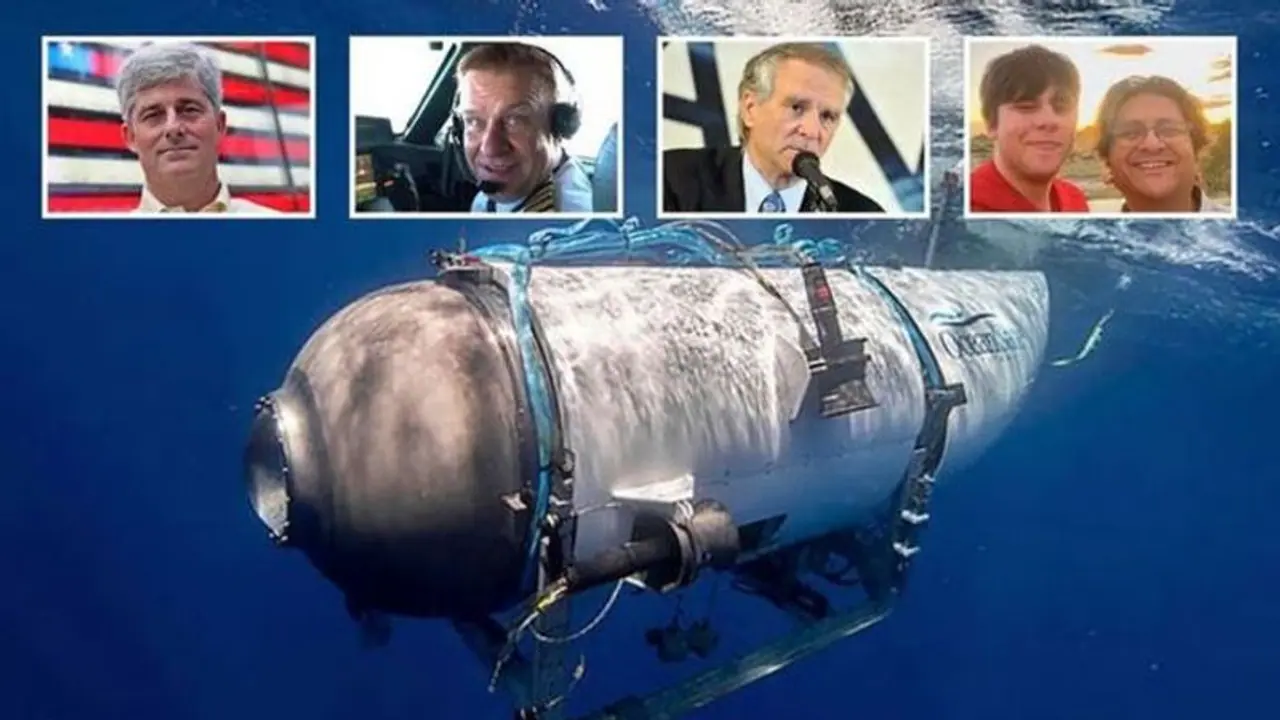On Thursday, in a heart-wrenching statement, the US Coast Guard announced that the crew members aboard the Titanic submersible were likely killed instantly in a "catastrophic implosion".
The 10-hour trip to the Titanic shipwreck turned out to be tragic, with all five people aboard the missing submarine dying in a 'catastrophic implosion'. Their demise was confirmed on Thursday, bringing an intensely publicised week-long hunt for survivors to an end. On Sunday, the day it vanished, the US Navy heard a sound consistent with an implosion. Since then, search crews have discovered pieces of the OceanGate Titan submersible, providing further proof that everyone on board lost their lives. However, as investigators continue looking for wreckage, many unanswered issues remain, including when the implosion occurred and just what went wrong with the sub.

The five men on board included the OceanGate CEO Stockton Rush, British businessman Hamish Harding, Pakistani billionaire Shahzada Dawood and his son Suleman Dawood, and French explorer Paul-Henri Nargeolet.
Here's all you need to know about the doomed Titanic submersible's tragedy
What is a catastrophic implosion?
The unexpected internal collapse of the vessel, which would have been under tremendous pressure at the depths it was descending towards, is referred to as an underwater implosion. An explosion would have been an outward force coming from within the craft.
Although the Titan's location and depth at the time of its implosion are unknown, the Titanic's wreck is located about 13,000 feet (almost 4,000 metres) below sea level. About 1 hour and 45 minutes into the approximately 2-hour descent, the submersible lost contact.
Fragments of the Titan sub were located on the ocean floor yesterday, 480m (1600ft) from the bow of the Titanic wreck.
According to Rick Murcar, the international training director for the National Association of Cave Divers, the pressure at the depth where the Titanic wreckage is located is approximately 5,600 pounds per square inch, which is a few hundred times more than the pressure we feel on the surface.
Aileen Maria Marty, a former naval officer and professor at Florida International University, described a catastrophic implosion as "incredibly quick," occurring in the space of a single millisecond.
“The entire thing would have collapsed before the individuals inside would even realize that there was a problem,” she told CNN. “Ultimately, among the many ways in which we can pass, that’s painless.”
It is doubtful that any bodies will be found, according to experts. In an effort to salvage what it can, the US Coast Guard said it will resume the search, but it issued a warning that the sea floor was "an incredibly unforgiving environment."
Was Titanic submersible disaster preventable?
The OceanGate vessel's safety procedures have been under close examination ever since the Titan sub went missing. The head of the Manned Underwater Vehicles Committee in Los Angeles, William Kohnen, has criticised the absence of regulations governing the sub. The incident, according to Kohnen, who previously wrote an open letter to OceanGate expressing worries about the craft's safety, was "clearly preventable."
He praised the success of the underwater submersible sector, which, according to him, has not had any significant mishaps since the 1960s. Without certification, he continued, this type of submersible with tourists on board "would not be allowed" in US, British, or Canadian seas.
Also read: All 5 people onboard missing Titanic submersible have sadly been lost, confirms OceanGate
How will experts find out what happened?
What specifically happened to the sub will likely be the focus of any subsequent investigation, but how will specialists go about doing this? The authorities will be gathering every piece of debris they can locate before bringing them to the surface to hunt for the fractures in the carbon fibre construction, according to Ryan Ramsey, a retired submarine captain in the Royal Navy.
"There is no black box, so you are not going to be able to track the last movements of the vessel itself," he said.
Whether a structural failure was the root of the problem is the key question that investigators will be attempting to resolve.
Which ships remain at the Titan debris site?
Before teams begin to demobilize, according to the US Coast Guard, some vessels are still present at the debris field.
The Titan submarine's mothership, the Polar Prince, is currently returning to St. John's, Newfoundland, Canada, and is scheduled to do so Saturday morning.
The Palegic Odysseus 6K ROV, which discovered the debris field, was used by the commercial ship Horizon Arctic. The same business that owns Polar Prince also runs the ship.
The Victor 6000 ROV, which can operate at the same depth as the Odysseus 6K at the Titanic disaster site, has been deployed by the French-operated ship L'Atalante.
The Canadian Coast Guard is in charge of the scientific research vessel John Cabot, which has sonar search capability.
What’s next for the search effort?
Authorities will continue to scour the sea floor in addition to looking for the passengers in an effort to learn more about what caused the implosion. The US Coast Guard said on Thursday that creating a precise timeline of events will take time since the undersea environment is "incredibly complex."
So far, they have discovered the Titan's nose cone, one end of its pressure hulls, and another, smaller debris field, all in one big debris field.
“What they would do now is go back to that site and, like cookie crumbs, try to find a trail as to where that would lead,” said Tom Maddox, CEO of Underwater Forensic Investigators, who took part in a Titanic expedition in 2005.
He continued by saying that the debris fragments might still be "slightly buoyant" and go further afield on the ocean's currents. “So the big project right now is going to be trying to collect those parts,” he said. “They’ll mark them, they’ll indicate where they were, and they’ll lay out a map of where those parts were found.”
